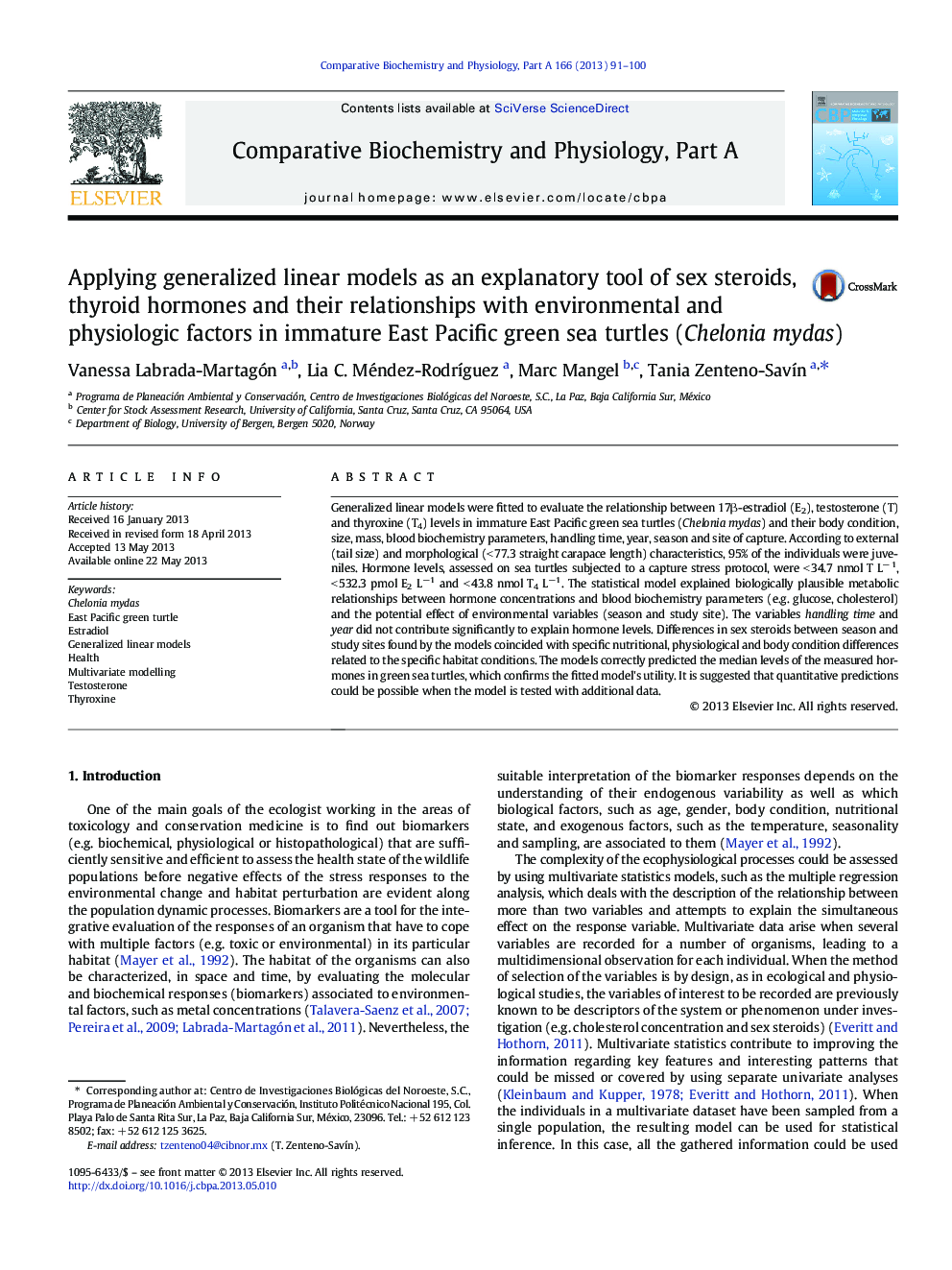| Article ID | Journal | Published Year | Pages | File Type |
|---|---|---|---|---|
| 10818883 | Comparative Biochemistry and Physiology Part A: Molecular & Integrative Physiology | 2013 | 10 Pages |
Abstract
Generalized linear models were fitted to evaluate the relationship between 17β-estradiol (E2), testosterone (T) and thyroxine (T4) levels in immature East Pacific green sea turtles (Chelonia mydas) and their body condition, size, mass, blood biochemistry parameters, handling time, year, season and site of capture. According to external (tail size) and morphological (< 77.3 straight carapace length) characteristics, 95% of the individuals were juveniles. Hormone levels, assessed on sea turtles subjected to a capture stress protocol, were < 34.7 nmol T Lâ 1, < 532.3 pmol E2 Lâ1 and < 43.8 nmol T4 Lâ1 . The statistical model explained biologically plausible metabolic relationships between hormone concentrations and blood biochemistry parameters (e.g. glucose, cholesterol) and the potential effect of environmental variables (season and study site). The variables handling time and year did not contribute significantly to explain hormone levels. Differences in sex steroids between season and study sites found by the models coincided with specific nutritional, physiological and body condition differences related to the specific habitat conditions. The models correctly predicted the median levels of the measured hormones in green sea turtles, which confirms the fitted model's utility. It is suggested that quantitative predictions could be possible when the model is tested with additional data.
Keywords
Related Topics
Life Sciences
Biochemistry, Genetics and Molecular Biology
Biochemistry
Authors
Vanessa Labrada-Martagón, Lia C. Méndez-RodrÃguez, Marc Mangel, Tania Zenteno-SavÃn,
